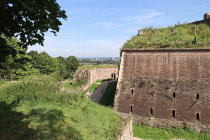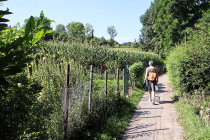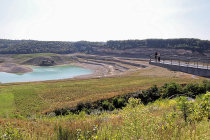The Sint Pietersberg is the northern stretch of the limestone Caestert Plateau and finds itself sandwiched between the Jeker
and Meuse rivers.
In Neolithic times local flint deposits were mined for stone tools and weapons and since the Middle Ages the limestone
was quarried for building material and fertilizer. Over time this has created a dense and chaotic network of tunnels and caves. During
all that digging, scores of fossils were found like the famous skull of a Mosasaurus in 1765.
The hill's strategic position was quickly
recognized as indicated by the remains of an Iron Age fortress. Fort St Pieter was built in 1702 to defend Maastricht, but in 1794 a
large French army took the city anyway.
From 1921 till 2018 ENCI operated a large scale surface mining of limestone for cement
production. The quarry is now transformed into a nature reserve. An elevated observatory gives a nice view over the quarry and, when
lucky, you may spot one of the resident eagle-owls.
The viewpoint is also the formal end of the 500 km long Pieterpad, the country's
longest walking trail.
We visited here in September 2021.



































































